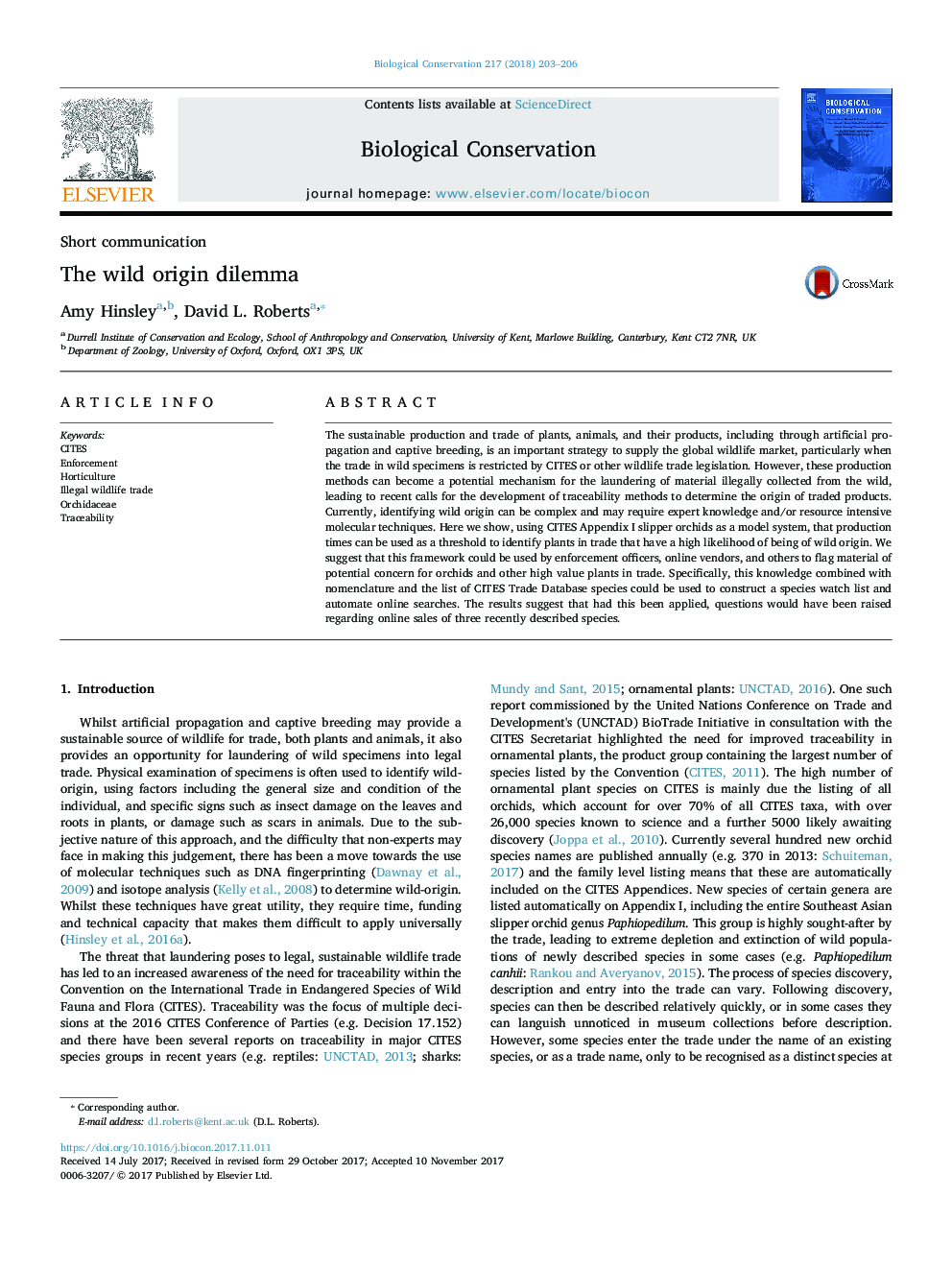| Article ID | Journal | Published Year | Pages | File Type |
|---|---|---|---|---|
| 8847632 | Biological Conservation | 2018 | 4 Pages |
Abstract
The sustainable production and trade of plants, animals, and their products, including through artificial propagation and captive breeding, is an important strategy to supply the global wildlife market, particularly when the trade in wild specimens is restricted by CITES or other wildlife trade legislation. However, these production methods can become a potential mechanism for the laundering of material illegally collected from the wild, leading to recent calls for the development of traceability methods to determine the origin of traded products. Currently, identifying wild origin can be complex and may require expert knowledge and/or resource intensive molecular techniques. Here we show, using CITES Appendix I slipper orchids as a model system, that production times can be used as a threshold to identify plants in trade that have a high likelihood of being of wild origin. We suggest that this framework could be used by enforcement officers, online vendors, and others to flag material of potential concern for orchids and other high value plants in trade. Specifically, this knowledge combined with nomenclature and the list of CITES Trade Database species could be used to construct a species watch list and automate online searches. The results suggest that had this been applied, questions would have been raised regarding online sales of three recently described species.
Related Topics
Life Sciences
Agricultural and Biological Sciences
Ecology, Evolution, Behavior and Systematics
Authors
Amy Hinsley, David L. Roberts,
